
Trongsa District: The Heart of Bhutanese Heritage
Explore Trongsa District, the heart of Bhutan, where history, culture, and natural beauty converge to create an unforgettable travel experience.
Trongsa District, located in the heart of Bhutan, is a must-visit destination for those who want to experience the rich cultural and historical essence of the country. The district is home to the majestic Trongsa Dzong, the largest fortress in Bhutan, which offers breathtaking views of the Mangde River. This fortress has been a crucial part of Bhutan's history, serving as the seat of power for many centuries. Trongsa is not just about its historical significance; it is also a place of serene natural beauty. The district is surrounded by lush green hills and valleys that offer numerous trekking opportunities for adventure enthusiasts. The winding roads and picturesque landscapes make it an ideal spot for photography and nature walks. Visitors can also enjoy the vibrant local culture, with traditional music, dance, and festivals that provide a deep insight into Bhutanese life. A visit to Trongsa is incomplete without exploring its local markets, where you can find unique Bhutanese handicrafts and textiles. The warm hospitality of the local people adds to the charm of this beautiful district. Whether you are a history buff, a nature lover, or someone looking to immerse yourself in local culture, Trongsa District has something to offer for everyone.
Local tips in Trongsa District
- Visit Trongsa Dzong early in the morning to avoid crowds and capture the best photographs.
- Wear comfortable trekking shoes, as the district offers many beautiful trails and walking paths.
- Try local delicacies at traditional eateries to get an authentic taste of Bhutanese cuisine.
- Check the local festival calendar to experience vibrant cultural events and traditional performances.
- Bring cash, as credit card facilities may not be available in many local shops and markets.
Trongsa District: The Heart of Bhutanese Heritage
Trongsa District, located in the heart of Bhutan, is a must-visit destination for those who want to experience the rich cultural and historical essence of the country. The district is home to the majestic Trongsa Dzong, the largest fortress in Bhutan, which offers breathtaking views of the Mangde River. This fortress has been a crucial part of Bhutan's history, serving as the seat of power for many centuries. Trongsa is not just about its historical significance; it is also a place of serene natural beauty. The district is surrounded by lush green hills and valleys that offer numerous trekking opportunities for adventure enthusiasts. The winding roads and picturesque landscapes make it an ideal spot for photography and nature walks. Visitors can also enjoy the vibrant local culture, with traditional music, dance, and festivals that provide a deep insight into Bhutanese life. A visit to Trongsa is incomplete without exploring its local markets, where you can find unique Bhutanese handicrafts and textiles. The warm hospitality of the local people adds to the charm of this beautiful district. Whether you are a history buff, a nature lover, or someone looking to immerse yourself in local culture, Trongsa District has something to offer for everyone.
When is the best time to go to Trongsa District?
Iconic landmarks you can’t miss
Phobjikha Valley
Explore Phobjikha Valley, a serene glacial valley in Bhutan, renowned for its stunning landscapes, rich culture, and seasonal black-necked cranes.

Gangtey Monastery
Explore Gangtey Monastery, a serene retreat in Bhutan’s Phobjikha Valley, where spirituality meets stunning natural beauty.

Royal Manas National Park
Embark on a journey through Royal Manas National Park, a haven of biodiversity and stunning landscapes in Bhutan, perfect for nature lovers and adventure seekers.

Jigme Singye Wangchuck National Park
Experience the natural wonders and rich biodiversity of Jigme Singye Wangchuck National Park, Bhutan's largest national park and a true haven for nature lovers.

Yangkhil Resort
Experience the serene beauty of Bhutan at Yangkhil Resort, where traditional architecture meets modern comfort amidst stunning landscapes.

Trongsa Dzong ཀྲོང་གསར་རྫོང།
Discover the architectural wonder of Trongsa Dzong, a historical monastery and fortress in Bhutan, rich in culture and stunning views.

Willing Waterfall Cafe
Discover culinary delights amidst stunning natural beauty at Willing Waterfall Cafe along Bhutan's scenic Wangdue Phodrang - Trongsa Highway.
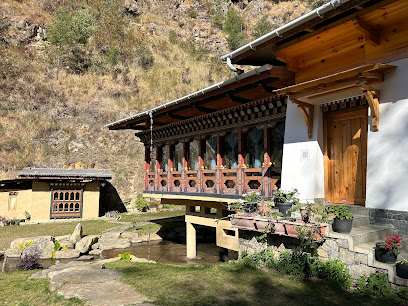
Chendebji Chorten སྤྱན་སྡེབ་སྦྱིས་མཆོད་རྟེན།
Discover tranquility and spirituality at Chendebji Chorten, a majestic Buddhist temple that reflects Bhutan's rich cultural heritage.

Taa-Dzong བལྟ་རྫོང་།
Explore the captivating history and cultural heritage of Bhutan at Taa-Dzong Museum in Trongsa, a must-visit for cultural enthusiasts.

Jakar Dzong བྱ་དཀར་རྫོང་།
Explore Jakar Dzong, Bhutan's largest fortress-monastery, where history, culture, and breathtaking landscapes converge in splendid harmony.
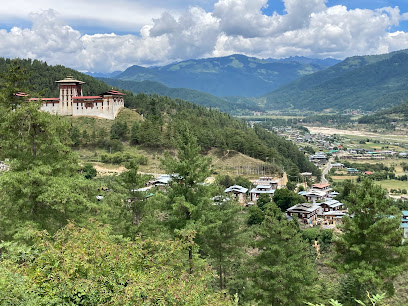
Trongsa Dzong View Point
Discover the breathtaking views and rich cultural heritage at Trongsa Dzong View Point, an iconic spot in Bhutan's stunning landscape.

Willing Resort
Discover tranquility and cultural richness at Willing Resort, a serene retreat in the heart of Bhutan's stunning landscapes.

Bhutan View
Experience the breathtaking Himalayan landscapes at Bhutan View, an unforgettable stop along the scenic Sarpang - Gelephu - Trongsa Highway.

Nabji Lhakhang
Discover the tranquility and cultural richness of Nabji Lhakhang, a sacred pilgrimage site nestled in the stunning landscapes of Bhutan.

Bubja Waterfall
Experience the serene beauty of Bubja Waterfall, a natural wonder in Bhutan perfect for nature lovers and adventure seekers.

Unmissable attractions to see
Chendebji Chorten སྤྱན་སྡེབ་སྦྱིས་མཆོད་རྟེན།
Explore the spiritual essence of Bhutan at Chendebji Chorten, a stunning Buddhist stupa surrounded by breathtaking landscapes.

Phrumsengla National Park
Explore the breathtaking landscapes and rich biodiversity of Phrumsengla National Park, a true gem of Bhutan for nature lovers and adventure seekers.

Lawa La
Explore the breathtaking landscapes of Lawa La in Dungdungneysa, a must-visit tourist attraction for nature lovers and adventure seekers.
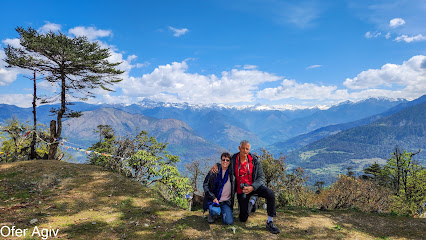
Phobjikha View Point Chorten
Experience the breathtaking views of Phobjikha Valley at Phobjikha View Point Chorten, a serene spot that showcases Bhutan's natural beauty and cultural heritage.
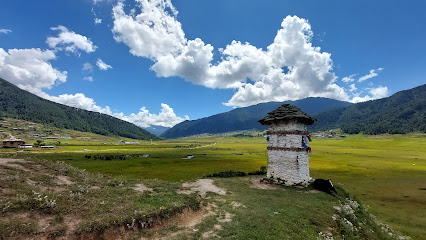
Nabji Viewpoint
Explore the breathtaking Nabji Viewpoint in Bhutan, where stunning landscapes and serene tranquility come together for an unforgettable experience.

Bermoo Botanical Garden
Explore the serene and diverse plant life at Bermoo Botanical Garden in Zhemgang, a peaceful retreat in the heart of Bhutan's natural beauty.

Kashiloo Hill
Explore the breathtaking vistas and serene hiking trails of Kashiloo Hill, a hidden paradise in Chemaito, Bhutan, perfect for nature lovers and adventurers.

Tshonam Tsho
Explore the tranquil beauty of Tshonam Tsho, a hidden gem in Bhutan's lush landscapes offering serenity and stunning natural vistas.

Passang Zam
Experience the breathtaking beauty and cultural richness of Passang Zam along the Sarpang - Gelephu - Trongsa Highway in Bhutan.

Tongjaan
Explore the serene beauty of Tongjaan Garden, a lush haven in Karshong Village, perfect for nature lovers and tranquility seekers.

Phaitang Classic House
Discover the serene beauty of Phaitang Classic House in Trongsa, Bhutan, a tranquil garden reflecting the rich natural heritage of the region.

Luli la
Explore Luli la, a serene tourist attraction in Dhur, Bhutan, surrounded by stunning natural landscapes and rich cultural heritage.

Baartang
Discover the breathtaking trails of Baartang, a hidden hiking paradise in Trongsa, Bhutan, surrounded by stunning landscapes and rich culture.

chagkhar Heritage Museum
Explore the rich heritage of Bhutan at Chagkhar Heritage Museum in Dhur, a treasure trove of culture and history.

Gongsa Dumra གོང་ས་ལྡུམ་ར།
Explore the tranquil Gongsa Dumra Park in Trongsa, Bhutan, where natural beauty meets cultural richness in a serene setting.

Essential places to dine
Willing Waterfall Cafe
Discover tranquility at Willing Waterfall Cafe, where culinary delights meet breathtaking views in the heart of Bhutan.

Norbu Yangphel Restaurant
Experience the essence of Bhutan with organic dishes at Norbu Yangphel Restaurant - where every meal tells a story.

Tashi Ninjey Hotel
Experience authentic Bhutanese cuisine at Tashi Ninjey Hotel in Trongsa Town - where every meal tells a story.

View point Cafetaria
Discover culinary delights and stunning vistas at View Point Cafetaria in Trongsa – a true gem in Bhutan's scenic landscape.
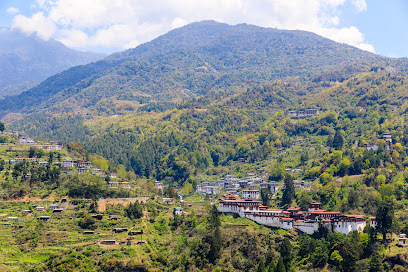
Norjun Restaurant
Experience the heart of Bhutanese cuisine at Norjun Restaurant in Trongsa – where tradition meets taste.
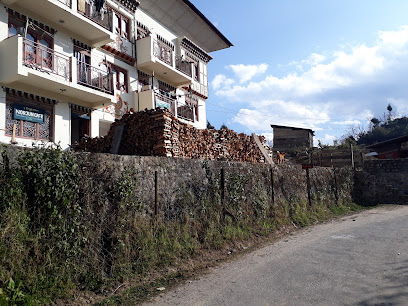
Subba Restaurant cum Bar
Discover the flavors of Bhutan at Subba Restaurant cum Bar in Trongsa – where tradition meets taste in every bite.

Feroz Hotel
Discover the flavors of Bhutan at Feroz Hotel in Trongsa - where every meal tells a story.

Trowa Restaurant
Experience authentic Bhutanese flavors at Trowa Restaurant in Trongsa - a must-visit culinary destination for all travelers.

Norling Restaurant
Experience authentic Bhutanese cuisine at Norling Restaurant in Trongsa, where every meal tells a story of culture and tradition.

Tshering Yangkhil Restaurant
Discover authentic Bhutanese flavors at Tshering Yangkhil Restaurant in Zhemgang, where every meal is a journey into local culinary traditions.

Samcholing Green Tea House
Discover tranquility and authentic Bhutanese tea culture at Samcholing Green Tea House in Trongsa.

Lhenzom Pure Vegetarian Hotel
Discover Lhenzom Pure Vegetarian Hotel in Trongsa – where authentic vegetarian cuisine meets Bhutanese hospitality.

Samba Zoksong
Experience authentic Bhutanese flavors at Samba Zoksong, nestled on the scenic Bumthang - Ura Highway amidst breathtaking landscapes.

CLCS Dinning
Experience authentic Bhutanese flavors at CLCS Dinning in Trongsa – where every meal tells a story.
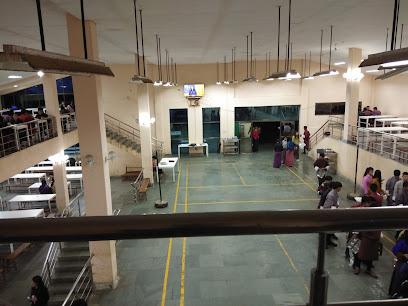
TT Restaurant, Bar & Catering Service
Discover authentic Bhutanese flavors at TT Restaurant, Bar & Catering Service - where every meal tells a story.

Markets, malls and hidden boutiques
Food Corporation of Bhutan
Discover the essence of Bhutanese cuisine at Food Corporation of Bhutan, your go-to destination for authentic Asian groceries.

Olos General Tshongkhang
Discover unique Bhutanese handicrafts and souvenirs at Olos General Tshongkhang, a must-visit store in Trongsa that showcases the heart of local craftsmanship.
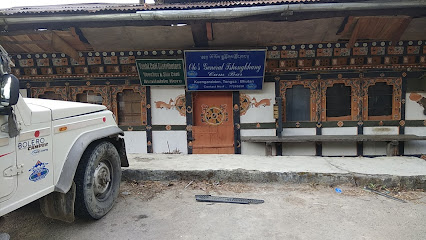
CDCL Work Shop
Discover cutting-edge electronics at CDCL Work Shop in Trongsa, Bhutan, where quality meets exceptional service in a charming setting.
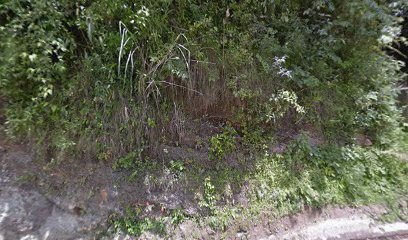
Y T
Experience the essence of Bhutan at Y T Grocery Store, where local flavors and authentic products await every traveler.

Rabten Tshongkhang
Experience the essence of Bhutanese culture at Rabten Tshongkhang, a charming general store in Trongsa with unique local products.
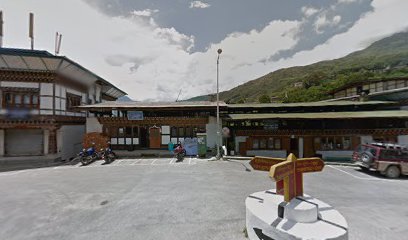
General shop
Discover the heart of Trongsa at the General Shop, where local flavors and authentic Bhutanese culture come together in a charming setting.

Therpa General Shop
Explore the unique offerings of Therpa General Shop in Trongsa, a charming general store showcasing local crafts and Bhutanese culture.

District store
Discover unique home goods and local craftsmanship at Trongsa's District Store, a blend of tradition and modernity in Bhutan.

Thepatshang Tshongkhang
Explore Thepatshang Tshongkhang, a shopping mall in Trongsa, Bhutan, offering unique local crafts and a taste of vibrant culture.

Rudra ,
Explore Rudra in Upper Gozhi Bhutan for unique local crafts and a glimpse into Bhutanese culture through authentic shopping experiences.

Meto Pema Tshok
Explore the unique offerings of Meto Pema Tshok in Trongsa, where authentic Bhutanese crafts meet local culture, perfect for souvenir shopping.

Pusula Shop
Explore the charm of Bhutan through unique handcrafted items at Pusula Shop, a treasure trove of local culture and artistry.

Tshang Lhaye General Shop
Discover authentic Bhutanese souvenirs and local flavors at Tshang Lhaye General Shop in Taktse.

Womatsang general Store
Explore Womatsang General Store in Trongsa for unique handicrafts, local snacks, and an authentic taste of Bhutanese culture.

Kinley Wangmo General Shop
Discover the essence of Bhutan at Kinley Wangmo General Shop, a charming store in Trongsa offering unique local crafts and snacks.

Essential bars & hidden hideouts
Willing Waterfall Cafe
Discover the harmony of nature and flavor at Willing Waterfall Cafe, a picturesque dining escape along Wangdue Phodrang - Trongsa Highway.

View point Cafetaria
Experience the exquisite blend of local flavors and breathtaking views at View Point Cafetaria in Trongsa, Bhutan.

Norjun Restaurant
Discover the authentic flavors of Bhutan at Norjun Restaurant in Trongsa, where traditional cuisine meets warm hospitality in a charming setting.

Subba Restaurant cum Bar
Experience authentic Bhutanese flavors at Subba Restaurant cum Bar in Trongsa, where tradition meets a welcoming ambiance.

Feroz Hotel
Experience the heart of Bhutanese cuisine at Feroz Hotel, a delightful restaurant in Trongsa offering authentic local dishes in a warm atmosphere.

Trowa Restaurant
Discover the flavors of Bhutan at Trowa Restaurant in Trongsa, where authentic cuisine meets warm hospitality in a charming setting.

Norling Restaurant
Experience authentic Bhutanese flavors at Norling Restaurant in Trongsa, where every dish tells a story of Bhutan's rich culinary heritage.

Tamang Restaurant
Experience authentic Bhutanese cuisine at Tamang Restaurant in Trongsa, where local flavors and warm hospitality come together.

Sunshine Bar and Restaurant
Experience the best of Bhutanese and international cuisine at Sunshine Bar and Restaurant, where every meal is a celebration of flavor.

ОКСАНА ГЕННАДЬЕВНА
Discover ОКСАНА ГЕННАДЬЕВНА in Karshong Village, where local culture meets cozy relaxation in a charming bar setting.

Chokerling Restaurant
Discover the authentic flavors of Bhutan at Chokerling Restaurant in Trongsa, where tradition meets taste in a stunning mountain setting.

Tashi Delek Restaurant And Bar
Experience authentic Bhutanese cuisine and vibrant atmosphere at Tashi Delek Restaurant and Bar in Trongsa.

Phuntsho Shop and Bar
Experience the vibrant atmosphere of Phuntsho Shop and Bar, a cozy spot in Sawaphu offering a delightful selection of local and international beverages.

Sonam Selzin Restaurant and Bar
Discover the flavors of Bhutan at Sonam Selzin Restaurant and Bar, where authentic local cuisine meets stunning mountain views.

Chimmi Bar & Restaurant
Experience the warmth of Bhutanese culture at Chimmi Bar & Restaurant, a perfect stop on the Trongsa - Yotongla Highway for local flavors and stunning views.

Local Phrases about Trongsa District
-
- Helloཇོ ཇོ
[jo jo] - Goodbyeབསྒོའི།
[sagoe] - Yesགིས
[gi] - Noམ མེད
[me me] - Please/You're welcomeམི་མཐུད
[mi thud] - Thank youབདག
[dak] - Excuse me/Sorryབཀག
[kag] - How are you?ཁྱེད་ ལས
[khye la] - Fine. And you?ལན་ གི
[len gi] - Do you speak English?ཨིན ལིས འཛིན འཛིན
[in lis dzin dzin] - I don't understandང རིན བསྟན
[nga rin ten]
- Helloཇོ ཇོ
-
- I'd like to see the menu, pleaseམ ངས སྤྱོད ནང
[nga nga choe nang] - I don't eat meatང སྟོམ ཆུ
[nga stom chu] - Cheers!དྲག
[drak] - I would like to pay, pleaseམ ངས ཚུག ནང
[nga nga tsuk nang]
- I'd like to see the menu, pleaseམ ངས སྤྱོད ནང
-
- Help!གལ
[gal] - Go away!གལ
[gal] - Call the Police!གལ
[gal] - Call a doctor!གལ
[gal] - I'm lostང མད
[nga me] - I'm illང ཕ
[nga pe]
- Help!གལ
-
- I'd like to buy...མ ངས སྙན ནང
[nga nga nyen nang] - I'm just lookingང ངས སྙན ནང
[nga nga nyen nang] - How much is it?ང འགྲི་ ང མེད
[nga dri nga me] - That's too expensiveདུས སྟོམ མེད
[dus stom me] - Can you lower the price?ང དབང མེད འཇོད
[nga dang me jod]
- I'd like to buy...མ ངས སྙན ནང
-
- What time is it?མི དག
[mi dak] - It's one o'clockམ ངས དགོང
[nga nga dong] - Half past (10)མ ངས དགོང
[nga nga dong] - Morningམཚོ
[tsu] - Afternoonམཚོ
[tsu] - Eveningམཚོ
[tsu] - Yesterdayམཚོ
[tsu] - Todayམཚོ
[tsu] - Tomorrowམཚོ
[tsu] - 1སུཐ
[sut] - 2བག
[bag] - 3སེ
[se] - 4བཞི
[shi] - 5དྲུག
[drub] - 6སྤྱོལ
[choel] - 7བདུག
[duk] - 8མོས
[mo] - 9གཉང
[nyang] - 10བཅུག
[chuk]
- What time is it?མི དག
-
- Where's a/the...?མ ངས མག
[nga nga mag] - What's the address?མ ངས མག
[nga nga mag] - Can you show me (on the map)?ང དཔ
[nga pa] - When's the next (bus)?མ ངས མག
[nga nga mag] - A ticket (to ....)མ ངས མག
[nga nga mag]
- Where's a/the...?མ ངས མག
History of Trongsa District
-
Trongsa, historically known as Tongsa, was founded in the 16th century by Ngagi Wangchuk, a descendant of the Bhutanese saint Pema Lingpa. Ngagi Wangchuk built the first temple, Chökhor Raptentse Dzong, which laid the foundation for what would become Trongsa Dzong, the largest dzong fortress in Bhutan.
-
Trongsa Dzong, constructed in 1644 by Chögyal Minjur Tempa, the first governor of Trongsa, is a monumental architecture that played a crucial role in the unification of Bhutan. It served as the seat of power for the first two kings of Bhutan, Ugyen Wangchuck and Jigme Wangchuck, who ruled the country from this fortress.
-
In the 17th century, Trongsa Dzong was a strategic military outpost that witnessed several conflicts. One significant event was the Battle of Trongsa in 1885, where Ugyen Wangchuck, then the Penlop (Governor) of Trongsa, defeated the forces of his rival, leading to his rise as a unifying leader and the eventual first King of Bhutan in 1907.
-
Trongsa has a profound connection with the Wangchuck dynasty. Every king of Bhutan must first serve as the Penlop (Governor) of Trongsa before ascending to the throne. This tradition underscores Trongsa's integral role in Bhutan's monarchical history, marking it as a critical training ground for future kings.
-
The Trongsa Tsechu, an annual religious festival held in Trongsa Dzong, is one of the most significant cultural events in Bhutan. Celebrated with masked dances, traditional music, and spiritual rituals, this festival honors Guru Rinpoche, the patron saint of Bhutan, and serves as a major gathering for the local community and visitors alike.
-
Ta Dzong, originally built as a watchtower to guard Trongsa Dzong from internal rebellion, now serves as a museum that showcases Bhutanese artifacts and the rich history of the Wangchuck dynasty. Its unique architecture and panoramic views of the surrounding valleys make it a must-visit site for history enthusiasts.
Trongsa District Essentials
-
Trongsa District is located in the central part of Bhutan. The nearest international airport is Paro International Airport, approximately 200 kilometers away. From Paro or the capital city Thimphu, you can take a domestic flight to Bumthang Airport, which is around 68 kilometers from Trongsa. Alternatively, you can travel by road, which takes about 7-8 hours from Thimphu. The journey by road is scenic but can be winding and challenging, so hiring a local driver is recommended.
-
Within Trongsa District, taxis are the most common form of transportation and are relatively inexpensive. For longer journeys or visits to rural areas, hiring a private vehicle with a driver is advisable. Public buses are available but may not be as frequent or convenient for tourists. Walking is a great option for exploring Trongsa town itself, given its compact size.
-
The official currency in Bhutan is the Bhutanese Ngultrum (BTN), which is pegged to the Indian Rupee (INR). Credit cards are accepted in some hotels and larger establishments, but cash is preferred, especially in smaller shops and rural areas. ATMs are available in Trongsa town, but it is wise to carry sufficient cash for your travels.
-
Trongsa District is generally safe for tourists, with low crime rates. However, standard precautions should always be taken. Avoid walking alone at night in poorly lit areas and keep an eye on your belongings in crowded spots. There are no specific high-crime neighborhoods targeting tourists, but staying vigilant is always recommended.
-
In case of emergency, dial 113 for police assistance or 112 for medical emergencies. Trongsa has a local hospital that can handle minor health issues and emergencies. It is advisable to have travel insurance that covers medical emergencies. For minor ailments, there are pharmacies in Trongsa town where over-the-counter medications can be purchased.
-
Fashion: Do dress modestly, especially when visiting religious sites. Avoid wearing revealing clothing. Religion: Do respect local customs and traditions. Always remove your shoes and cover your head when entering religious sites. Public Transport: Do be respectful and give up your seat to elderly passengers. Don't eat or drink on public transport. Greetings: Do greet people with a slight bow and say 'Kuzuzangpo' (hello). Shaking hands is not very common. Eating & Drinking: Do try local delicacies and accept food offerings graciously. Don't refuse hospitality, as it is considered impolite.
-
To experience Trongsa District like a local, visit the local markets where you can buy fresh produce and traditional Bhutanese goods. Engage with locals, as they are often friendly and willing to share stories about the district's history and culture. Don't miss visiting Trongsa Dzong, one of the largest and most impressive fortresses in Bhutan. For a unique experience, attend a local festival, such as the Trongsa Tsechu, which offers a glimpse into the rich cultural traditions of the area.
Trending Landmarks in Trongsa District
-
Phobjikha Valley
-
Gangtey Monastery
-
Royal Manas National Park
-
Jigme Singye Wangchuck National Park
-
Yangkhil Resort
-
Trongsa Dzong ཀྲོང་གསར་རྫོང།
-
Willing Waterfall Cafe
-
Chendebji Chorten སྤྱན་སྡེབ་སྦྱིས་མཆོད་རྟེན།
-
Taa-Dzong བལྟ་རྫོང་།
-
Jakar Dzong བྱ་དཀར་རྫོང་།
-
Trongsa Dzong View Point
-
Willing Resort
-
Bhutan View
-
Nabji Lhakhang
-
Bubja Waterfall
Nearby Cities to Trongsa District
-
Things To Do in Jakar
-
Things To Do in Bumthang
-
Things To Do in Wangdue Phodrang
-
Things To Do in Mongar
-
Things To Do in Punakha
-
Things To Do in Thimphu
-
Things To Do in Trashigang
-
Things To Do in Paro
-
Things To Do in Phuentsholing
-
Things To Do in Guwahati
-
Things To Do in Gangtok
-
Things To Do in Rangpur
-
Things To Do in Siliguri
-
Things To Do in Darjeeling
-
Things To Do in Shillong








